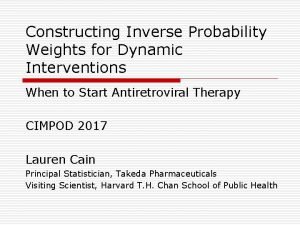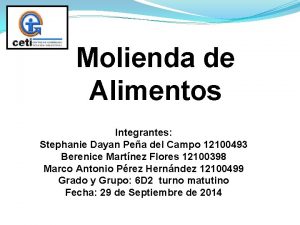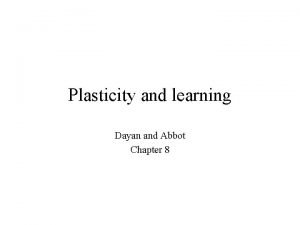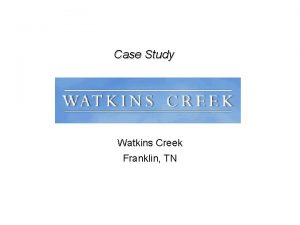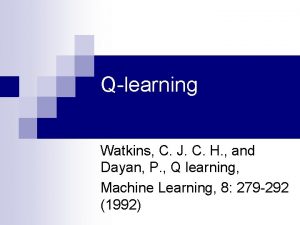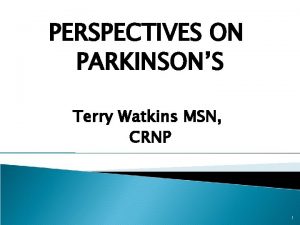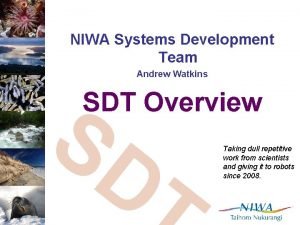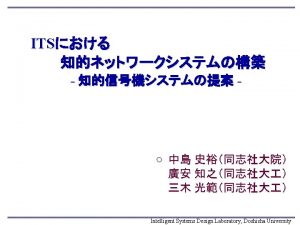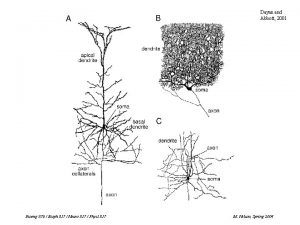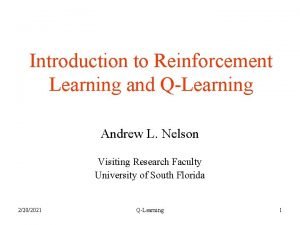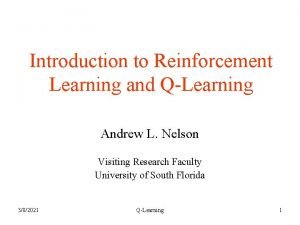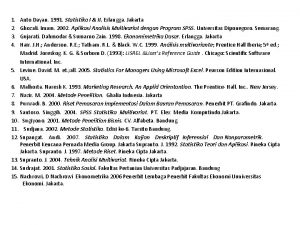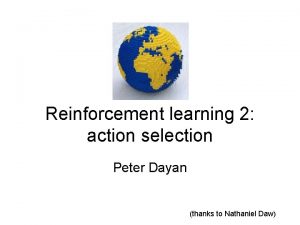Qlearning Watkins C J C H and Dayan












- Slides: 12

Q-learning Watkins, C. J. C. H. , and Dayan, P. , Q learning, Machine Learning, 8: 279 -292 (1992)

Q value When an agent take action at in state st at time t, the predicted future rewards is defined as Q(st, at). Example) Q 2(st, at)=1 rt a 1 t Q 1(st, at)=2 … st a 2 t … Q 3(st, at)=0 a 3 t st+1 rt+1 at+1 st+2 rt+1 at+2 Generally speaking, an agent should take action a 1 t because the corresponding Q value Q 1(st, at) is max.

Q learning First, Q value can be transformed as follows. ① ( ①) As a result, the Q value at time t is easily calculated by rt+1 and Q value of the next step.

Q learning Q values is updated every step. When an agent take action at in state st, and gets reward r, the Q value is updated as follows. target value current value TD error α: step size parameter (learning rate)

Q learning algorithm Initialize Q(s, a) arbitrarily Repeat (for each episode): initialize s Repeat (for each step of episode): Choose a from s using policy derived from Q (e. g. , greedy, ε-greedy) take action a, observe r, s’ s←s’; until s is terminal

n- step return (reward) 1 step (Q-learning) 2 step n step …. . Monte Carlo initial state (time t) …. . Complete experience based method Boot-strapping state …. . . action Terminal state (time T)

n- step return (reward)

λ-return (trace-decay parameter) 1 step 2 step 3 step weight n step …. . . λ-return Monte Carlo

λ-return (trace-decay parameter) 3 -step return

Eligibility trace and Replacing trace Eligibility and Replacing traces is useful to calculate the n-step return These traces show often each state is visited. Eligibility trace replacing trace Eligibility trace Replacing trace

Q(λ) algorithm Q-learning Q(λ) with replacing trace target value current value st for all s, a at Q (st , at) St+1

Q(λ) algorithm Initialize Q(s, a) arbitrarily and e(s, a)=0, for all s, a Repeat (for each episode): Initialize s, a Repeat (for each step): take action a, observe r, s’ choose a’ from s’ using policy derived from Q (e. g. , ε-greedy) a*←arg maxb Q(s’, b) (if a’ ties for the max, then a*←a’) δ←r+γQ(s’, a*)-Q(s, a) e(s, a)← 1 for all s, a: Q(s, a)←Q(s, a)+αδe(s, a) If a’=a*, then e(s, a)←γλe(s, a) else e(s, a)← 0 s←s’; a←a’ until s is terminal

